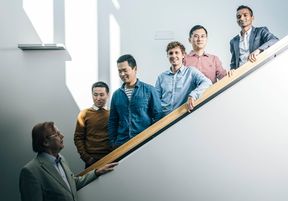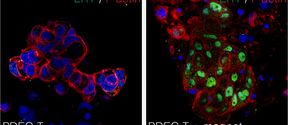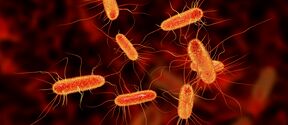Professor Olli Ikkala’s research draws in scientists from across many fields, including physics, chemistry, and biomedicine to develop new materials that have properties derived from nature.
Working with Olli
‘After being at Aalto for several months, my supervisor was retiring, so I needed a new host group to continue my research on MXenes, a type of 2-dimensional material. Olli’s group appealed to me because it has a well-equipped lab for material synthesis and the research topics were also very interdisciplinary. This was before the pandemic, so I went directly to his office to chat with him. Interestingly, he has his Chinese name card at his door. Clearly, I was not the first Chinese person looking for him.
I had never expected my MXene project to have been so interesting to him. It turns out that his knowledge in many different fields enabled him to find common interests from different projects. I then became one of his group members and continued my research. By becoming part of the HYBER project that he was the head of, I have been able to build new collaborations with people across different fields, and my research topic was largely extended.
Even during the pandemic, Olli has made sure that we’ve been able to safely collaborate, organizing online meetings and an outdoor barbeque at his summer cottage for group members. A former colleague of mine in Stockholm University had Olli as her opponent on her thesis defense. She said Olli’s questions were sharp and precise and had really enjoyed having him as a thesis opponent. Everyone in our field in Nordic countries knows of him, he has been a great supervisor to have.’
- Dr. Zhongpeng Lyu, Postdoctoral Researcher, Aalto University
Giving gels Pavlovian memory to ‘learn’ a new behaviour
‘I research materials that can be made to behave in a conditioned way, i.e., to mimic simplistically psychological learning. The classic example of conditioning is Pavlov’s dog — the dog would salivate when shown food, but not when ringing a bell. However, if the dog would hear a bell when it was shown food, the “conditioned” dog would salivate at the sound of the bell, even without food.
We wanted to make materials that mimic this learning behaviour, and set about trying to recreate conditioning in a soft polymer. We succeeded, by making a gel that consists of water and polymers. Initially the gel melts when heated but not upon shining light. It can be conditioned to melt when light is shone upon it. The gel has nanosized particles of gold mixed in, and when the light is shone on it normally, nothing happens. But if it is heated to its melting point whilst this light is shining on it, the gel becomes conditioned. This means that the next time the light is shone on it, it spontaneously melts, even if it’s not being heated from the outside.
The mechanism behind the conditioning in the material is that, when both heating and light are applied, the gold nanoparticles rearrange into chains that start to absorb the light in a new specific wavelength range. Once light shines again on the gel, the assembled nanoparticles themselves heat it up, melting it from the inside. People have been able to make electronic systems behave like Pavlov’s dog, but this is the first time for a soft material to do this “trick”. Importantly, the gel behaviour follows the same logic diagram as the Pavlov dog experiment. We are generalising the conditioning concept for other properties to make progressively “life-like materials”, perhaps even as a new simplistic form of artificial intelligence.’
- Dr. Hang Zhang, Postdoctoral Researcher, Aalto University
Personalized breast cancer models using nanotechnology
‘Breast cancer is the most frequently diagnosed cancer type, and is one of the leading causes of cancer-related deaths in women. In Finland, it represents nearly 30% of all cancer with more than 5 000 new annual cases.
Despite tremendous progress in cancer-related research, the existing one-size-fits-all treatment has the least success rate when it comes to breast cancer. To address this challenge, the research group of Professor Juha Klefström, a top cancer biologist from the University of Helsinki, joined their forces with Olli’s group to develop personalized breast cancer therapy. The goal was to develop materials that mimic the cellular environment of breast cancer tissues. The aim is to keep the surgically removed patient-derived tumor tissues alive for weeks under laboratory conditions, without losing their biological and physicochemical properties.
Validated using more than 2 000 patient samples, our technology is one of the significant breakthroughs in cancer biology in general and breast cancer in particular. Our research has resulted in two Business Finland-funded commercialisation projects aiming at precision cancer treatment.
We created cost-effective nanoscaffolds with tunable mechanical and functional properties. Our scaffolds allow predictive and long-term storage of patient tissues offering a unique platform for identifying drug response of each patient and can be individually modeled.’
- Nonappa, Associate Professor at the Tampere University, Adjunct Professor at Aalto University
Delivering drugs to the right part of the body
‘Advanced therapy medicines — such as mRNA and protein treatments are becoming popular at the moment — not least because the use of mRNA in some of the covid-19 vaccines. As part of the GeneCellNano flagship project, that Olli is a member of, I am researching using polymers to make targeted drug delivery for conditions in the eye.
With treatments like vaccines, it doesn’t exactly matter where in the body the chemical you inject ends up, because the immune system will find them and respond to them. But for targeted treatments it does. For example, if you’re treating a condition of the eye, it’s not useful if the drug you inject ends up in the feet. Our research is developing materials that can transport the drug safely within the target area, like the eye, and then release it only where it is needed.
As a chemist, once you start working with medical research you receive a long list of requirements of what your material must and must not do, and it can sometimes feel overwhelming to achieve all the parameters. This is why I am fortunate to work in the MolMat Lab, since Olli always has supportive ideas for every kind of problem. In fact, he is one of the most creative minds I have met so far. You can have a ten-minute talk with him and you have three new ideas at the end to go and try.’
- Dr. Sebastian Löscher, Postdoctoral Researcher, Aalto University
Making magnetic sensation for future robots
‘Biologists know that animals like birds and turtles that navigate across huge distances can do this by sensing earth’s magnetic fields, but don’t know sufficiently how animals sense magnetism. We wanted to see if we could create bioinspired magnetic sensing using our materials and whether we could achieve material behaviours that resemble simple learning processes, i.e., sensitisation and habituation.
To make a material that can sense magnetic fields, we partially fill a gap between two electrodes with magnetic nanoparticles. In its normal state, electricity cannot flow through, so there’s almost no conductivity between the electrodes. When the device is exposed to a magnetic field, the particles form into chains, bridging the gap between the electrodes, creating a current we can measure. This increase in conductivity is how we know the device has detected a magnetic field.
We are only looking into the fundamental principles of materials that can sense, but future applications are possible to imagine, specifically in fields like soft robotics. The ideal materials for soft robotics can sense their surroundings — like if something is magnetic — and can then react to what they sense.’
- Dr. Bo Peng, Academy Research Fellow, Aalto University













